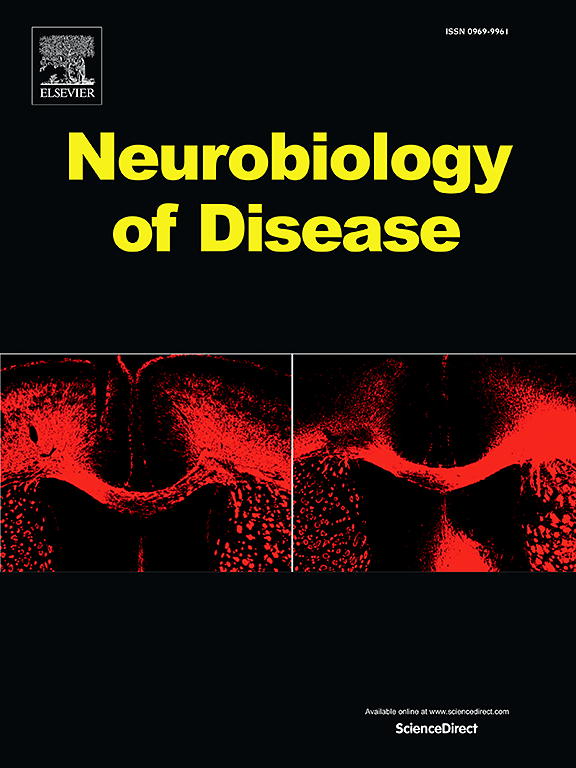Estrogen-related receptor gamma is a regulator of mitochondrial, autophagy, and immediate-early gene programs in spiny projection neurons: Relevance for transcriptional changes in Huntington disease
IF 5.1
2区 医学
Q1 NEUROSCIENCES
引用次数: 0
Abstract
Mitochondrial dysfunction, transcriptional dysregulation, and protein aggregation are hallmarks of multiple neurodegenerative disorders, including Huntington's disease (HD). Strategies are needed to counteract these processes to restore neuronal health and function in HD. Recent evidence indicates that the transcription factor estrogen-related receptor gamma (ERRγ/Esrrg) is required for normal expression of mitochondrial, synaptic, and autophagy genes in neurons. Further, overexpression of Esrrg in dopaminergic neurons reduces synuclein load in the pre-formed fibril model of synucleinopathy. For these reasons, we sought to understand ERRγ's role in transcriptional regulation in spiny projection neurons (SPNs), one of the neuronal populations vulnerable to transcriptional dysregulation, mitochondrial dysfunction, and protein aggregation in HD. Here, we demonstrate that developmental deletion of Esrrg selectively in SPNs causes a transcriptional pattern consistent with a reduction of Drd1 and Drd2–positive neurons in the mouse dorsolateral striatum. To avoid effects of developmental deletion and explore Esrrg's role within adult SPN populations, we deleted or overexpressed Esrrg in adult SPNs. While overexpression was sufficient to increase the expression of mitochondrial and lysosome-related transcripts, Esrrg deletion surprisingly caused increased expression of immediate-early genes and genes with enrichment of binding sites for transcriptional repressors. In contrast, these genes were downregulated by Esrrg overexpression. Concordantly, Esrrg-deficient mice exhibited lack of amphetamine-induced hyperactivity and further upregulation of immediate-early genes. To determine whether the alterations observed with ERRγ modulation have any relevance for understanding transcriptional changes in SPNs in neurodegeneration, we measured Esrrg and its responsive genes in two mouse models of HD. We found an increase in Esrrg expression in HD models, accompanied by a transcriptional profile with similarities to that observed with Esrrg overexpression, suggesting the existence of an ERRγ-dependent, stress-related response. Altogether, these studies suggest that ERRγ is a key activator of mitochondrial and lysosomal transcripts in SPNs with a potential bi-functional role as a mediator of immediate-early gene repression. Ongoing studies are investigating mechanisms underlying ERRγ's roles in transcriptional activation and repression in SPNs to inform strategies to promote neuroprotective actions of ERRγ in SPNs in HD.

求助全文
约1分钟内获得全文
求助全文
来源期刊

Neurobiology of Disease
医学-神经科学
CiteScore
11.20
自引率
3.30%
发文量
270
审稿时长
76 days
期刊介绍:
Neurobiology of Disease is a major international journal at the interface between basic and clinical neuroscience. The journal provides a forum for the publication of top quality research papers on: molecular and cellular definitions of disease mechanisms, the neural systems and underpinning behavioral disorders, the genetics of inherited neurological and psychiatric diseases, nervous system aging, and findings relevant to the development of new therapies.
 求助内容:
求助内容: 应助结果提醒方式:
应助结果提醒方式:


